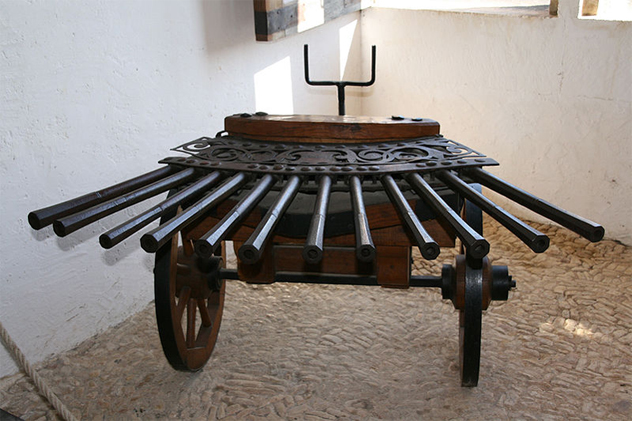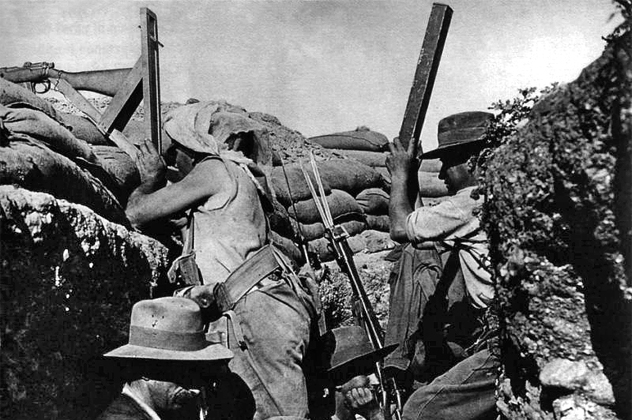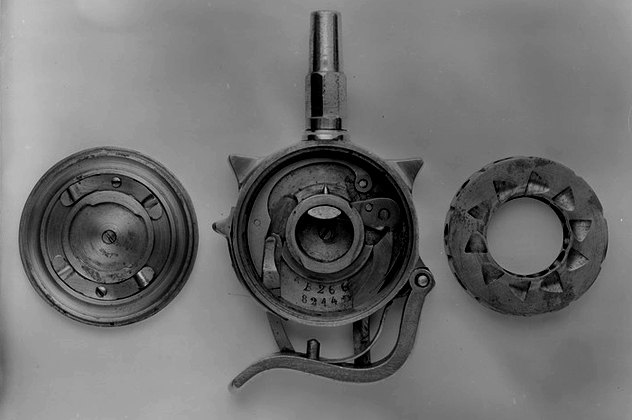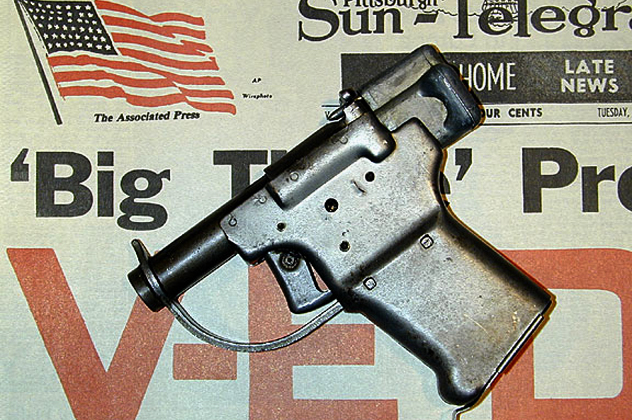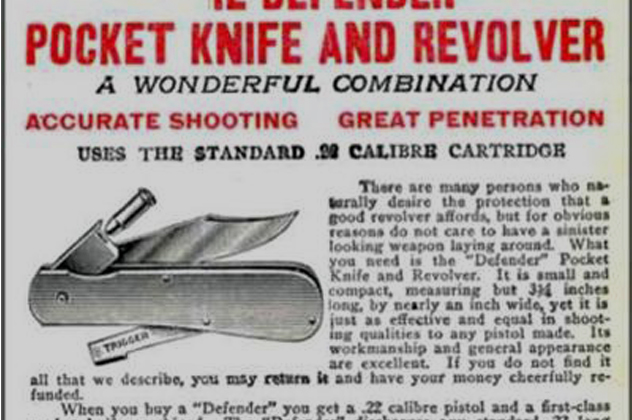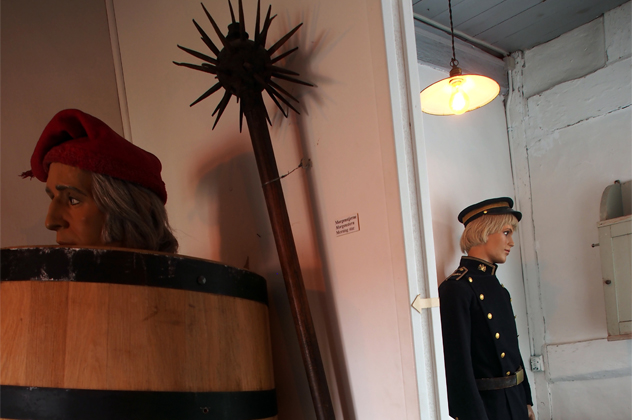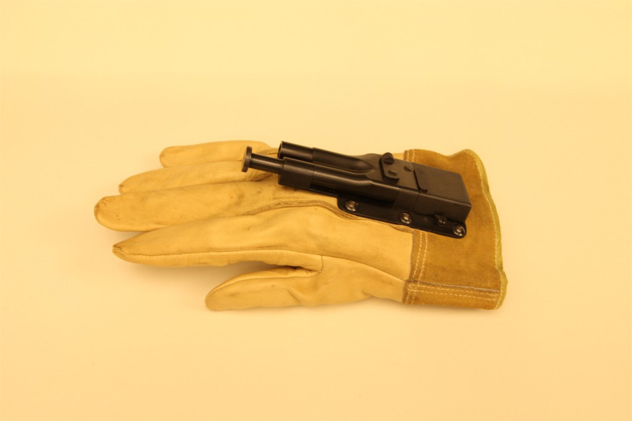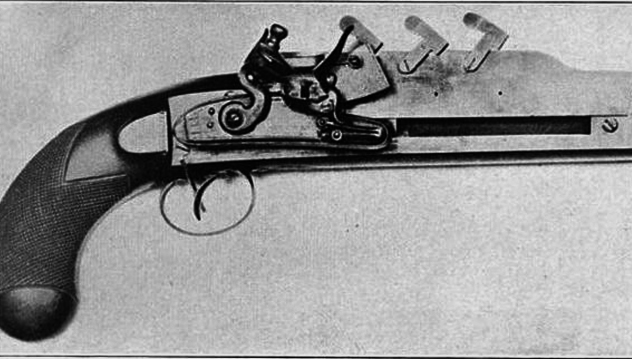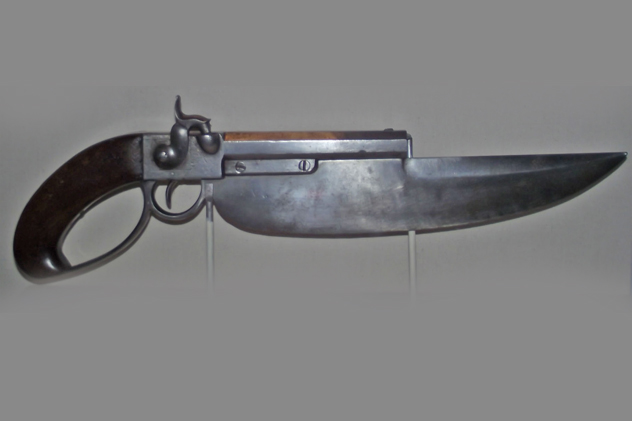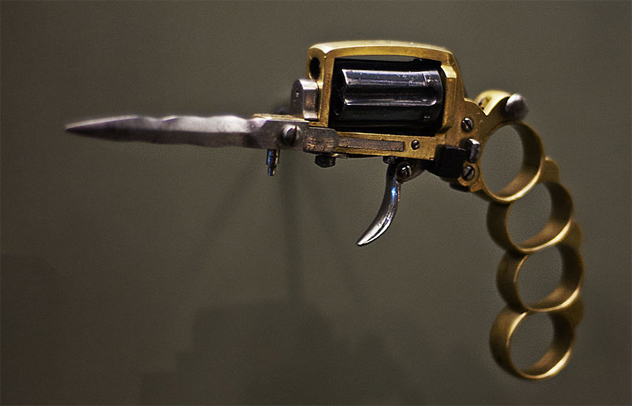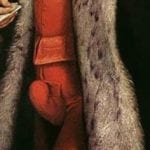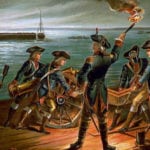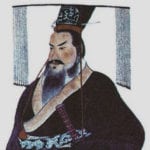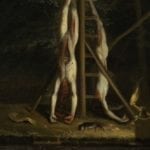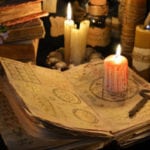10Ribauldequin
One of the early attempts to build rapid-fire artillery was the ribauldequin. It was a cart-mounted firing battery used in the 14th and 15th centuries. Because their many barrels resembled a pipe organ, ribauldequins became known as organ guns, and sometimes death organs. Far smaller caliber than cannons but larger than average guns, they played a supporting role in artillery bombardments. Ribauldequins were designed to be fired in quick succession with a match connecting the touch hole of all the barrels. Perhaps the largest were horse-drawn wagons with three sets of guns on each side, which would have made for a total of 144 guns that could be used against both infantry and armored cavalry. Unfortunately, when these massive gun batteries were deployed, their heavy weight got them stuck in the mud too often to be very useful. In the 14th century, a rapid-fire weapon would have proved quite an advantage during combat. Ribauldequins, however, suffered from a serious disadvantage as well. While the weapon itself could fire—in theory—dozens of consecutive rounds, the ribauldequin still had to be muzzle-loaded. It took a very long time to reload, which made for a long wait before the next volley. Ultimately, they enjoyed limited use.
9Periscope Rifles
Invented by English Lance Corporal W.C. Beech, the periscope rifle was used to fire from trenches and bunkers without exposing soldiers to enemy fire. He invented the weapon while serving at Gallipoli, where his invention saw extensive use. He essentially attached his rifle to a wooden board with a mirror aimed along the gun’s sights and another one at the bottom of the board through which the sniper could look. Following Beech’s “homemade” rifle, the governments of the world soon began developing their own. One of the more advanced was the Guiberson rifle. While most other periscope rifles were bulky affairs that did little more than attach frames to a normal rifle, the Guiberson, when its periscope function was collapsed, looked very similar to a normal rifle. The stock was hinged and collapsible, and when not in use the mechanics of the periscope sight were contained inside the wooden butt. Pressing a switch would contort the rifle and pop out the mirror, instantly turning what appeared to be a normal rifle into one designed for trench warfare. Unfortunately for soldiers, though, most periscope rifles models were developed too late in the war to reach the the front lines.
8Squeezer Pistols
Unlike traditional pistols, the squeezer pistol’s unique shape allowed the whole gun to fit in a person’s palm. They were marketed as easily concealable alternatives to bulkier handguns, and could hold more rounds than single- or double-shot Derringers, another kind of concealable gun that was popular at the time. This, however, often gave squeezer pistols both a unique shape and somewhat unusual firing methods. Several were shaped like rectangular boxes, and some didn’t even have triggers. Instead, the entire rear of the gun was compressed to fire. The Mitrailleuse was one such model. When the rear was slightly compressed, it would push a bullet from the magazine into the chamber. Pushing it further would cock the gun and release the pin, firing the weapon. A similar gun, called the Tribuzio, had a firing ring at the bottom of the gun, which was pulled out to load the gun and pulled back to fire it. Probably due to their uniqueness and the availability of other small guns that only required the simple pull of a trigger to fire, squeezer pistols saw very limited popularity.
7Disposable Pistols
Designed to be air-dropped to resistance fighters in World War II, a million Liberator pistols were mass-produced from sheet metal for only $1.72 per unit over the course of just four weeks. The simple pistols didn’t have the rifling grooves in the barrel that usually serve to keep the bullet’s trajectory straight, so they only had a range of about 7.5 meters (25 ft). They were designed to be a temporary weapon that resistance fighters could use to kill Japanese or German soldiers until they could scavenge a better gun. The Office of Strategic Services (OSS), the organization responsible for the United States’s covert ops, was in charge of their distribution. While the Liberator was designed to aid rebels, the OSS also meant for it to be used as a psychological warfare device. Most of the gun’s 23 parts were stamped so that, when they were inevitably found by the enemy, they would worry about how the weapons had landed in the hands of the resistance. Unfortunately, however, few Liberators saw action and most were either dumped off the sides of cargo ships or melted down for scrap metal. Another similar gun, the Deer Gun, was designed by the CIA to be used in Southeast Asia during the Vietnam War. Produced for only $3.50 in 1963, it was made from an aluminum casting to save on costs; the barrel was the only part made of steel. To load the weapon, the barrel was unscrewed and the ammunition set inside. It was a three-shot gun with a length of only 12.7 centimeters (5 in). Like the Liberator, it was designed to be air-dropped to rebels. Around a thousand were made, but after the Kennedy assassination and the trouble it caused for the CIA, plans for the Deer Gun were scrapped.
6Pocketknife Pistols
The Victorian era saw a boom in the popularity of gadgetry. Unwin & Rodgers, an English company, manufactured a pocketknife that contained a tiny pistol and advertised it as a way to defend houses from burglars. The gun’s trigger was built like a gimlet and could be screwed into doorposts and set to fire if the door was opened. It would have made an effective security alarm that would have both alerted the house’s owners to intruders and, hopefully, scared the burglars away at the same time. The Unwin & Rodgers model, first built in the mid-1800s, originally used percussion caps to fire but was converted to a cartridge model after that technology became standard. If used as a pistol, the percussion cap fired breech-loader ammunition and was advertised to be able to kill at 45 meters (150 ft), while the later cartridge ones increased the gun’s range to 118 meters (390 ft). Later companies also dabbled in pocketknife pistols. Among the most popular were the U.S. Small Arms Company’s “Defender.” It was a small pocketknife—only a little longer than 7.5 centimeters (3 in)—that could be loaded with .22 caliber bullets. In the ’30s, it sold for $5, the equivalent of around $70 today.
5King Henry VIII’s Walking Staff
King Henry VIII is mostly known for his many unlucky wives, but while he had a love for women, he also had a taste for exotic weapons. According to the stories, one of his favorites was “King Henry VIII’s Walking Staff”—a staff with a morning star at the end that concealed three matchlock pistols. One night, it even supposedly landed the king in jail. Legend has it that King Henry VIII would sometimes walk around the city with his staff at night to check on his constables. One night, a constable stopped him to question why a man was walking around in the dead of night with such a vicious-looking weapon. The king, unaccustomed to being dealt with in such a manner, struck him with it. The constable promptly arrested him and threw him in jail. The next morning, the constable was informed that he had arrested the King of England. He was terrified and expected to be executed, but instead King Henry VIII commended him and even gave him a gift for his dedication to duty. Aside from that, the king also allotted a generous allowance of bread and coal to his former cellmates, since his night in jail had been spent without a single candle. Whether or not that actually happened is a matter of conjecture, but it’s a very common story. King Henry VIII’s Walking Staff is currently on display in the Tower of London’s Tudor Room.
4Haight Fist Gun
In World War II, Naval Construction Battalions were tasked with building airfields on isolated Pacific islands. It was dangerous work that required clearing large amounts of brush that could be hiding enemies. As a last line of defense in case of an ambush, US Navy Captain Stanley Haight invented the Haight Fist Gun, a gun attached to a glove that fired a single .38 caliber S&W round via a punching motion. The fist glove was produced by the Sedgley Company, which had already been producing a number of other specialty guns. Officially named the “Hand Firing Mechanism MK 2,“ it isn’t known to what extent the weapon saw use in the field, though records have at least one case where it was used to dispatch a knife-wielding Japanese soldier who had boarded a construction vehicle. It was also issued to diversionary invasion forces to be used if captured by the enemy. It is sometimes portrayed as a spy weapon, though no instance of spies ever using it has been confirmed.
3Superimposed Firearms
Before the advent of cartridge ammunition, inventors developed a number of multi-shot firearms, some safer than others. Among the more dangerous were the superimposed firearms, which loaded multiple rounds in the same barrel. They would, in theory, use each round to act as a seal to protect consecutive ones from simultaneous firing once ignited. A sophisticated—for the time—system of loading that incorporated separate touch holes for each round was also designed to keep the powder from mixing. In an age where the time taken to reload single-shot weapons could cost someone their life, superimposed firearms were advertised as revolutionary pieces of technology. There were claims that the weapons could wipe out entire boarding parties of pirates before they even had a chance to touch foot on a ship’s deck. With all that hype, at least one inventor tried to capture the attention of the US Congress with his superimposed gun. Failing that, he approached both the British War Office and the East India Company, though neither wanted to adopt a weapon that had the obvious potential to kill its owner. One simple mistake or a dirty barrel could cause the whole contraption to explode in your hand.
2Elgin Cutlass Pistol
The Elgin cutlass pistol was both the first percussion pistol and the only combination pistol to be adopted by the US military. It was essentially a Bowie knife with a single-shot, smooth-bore pistol attached. One hundred fifty were issued by the US Navy to arm the Wilkes–South Sea Exploring Expedition, which went on to both circumnavigate the globe and prove that Antarctica was not a collection of islands, but had a continuous coastline. The weapon appeared in the wake of James Bowie’s famous dual with Norris Wright in which Bowie used a large knife with a crossguard and clip point to stab and kill Norris. Knives of the same style became known as “Bowie” knives and their popularity contributed to the Navy’s use of bizarre combination weapons like the Elgin cutlass pistol. The knife, though, was not popular with sailors. Aiming a pistol with an unwieldy Bowie knife attached below the barrel was likely difficult. Also, because it was a gun, it was equally cumbersome as a knife. Aside from the 150 issued mostly for the expedition, no others were contracted by the US government.
1Knuckle-duster Guns
A number of knuckle-duster guns emerged in the late 1800s to both keep travelers safe and murder them. One of the most famous knuckle-duster guns was the Apache, which was used by the Parisian street gangs of the same name. It was a combination knuckle-duster, knife, and pepperbox revolver. Since the barrel was the bullet chamber itself, the weapon’s pistol aspect only had a limited range. Other kinds of knuckle-duster pistols existed, like the Le Centenaire—which was also used by the Apaches—and an American model named “My Friend” that saw use in the days after the Civil War. On a national level, US law enforcement was extremely weak at the time and highway robbery was common. One Irish immigrant invented a small knuckle-duster handgun for travelers’ personal protection. It was manufactured in .22, .32, and .41 caliber models and was small enough to be easily concealed in a pocket or fist. If the shooter expended all their bullets, they could then flip the weapon around and use it as a fist weapon. Or, if they wanted to try their luck at hand-to-hand combat first, a pin would keep a loaded weapon from discharging. Manufactured by the original inventor and his sons, with each engraving done by hand, each “My Friend” is unique and highly collectible today. Nathan keeps a Japan blog where he writes about the sights and expat life, and finds Japanese culture in everyday items. You can also find him on Facebook and Twitter.
